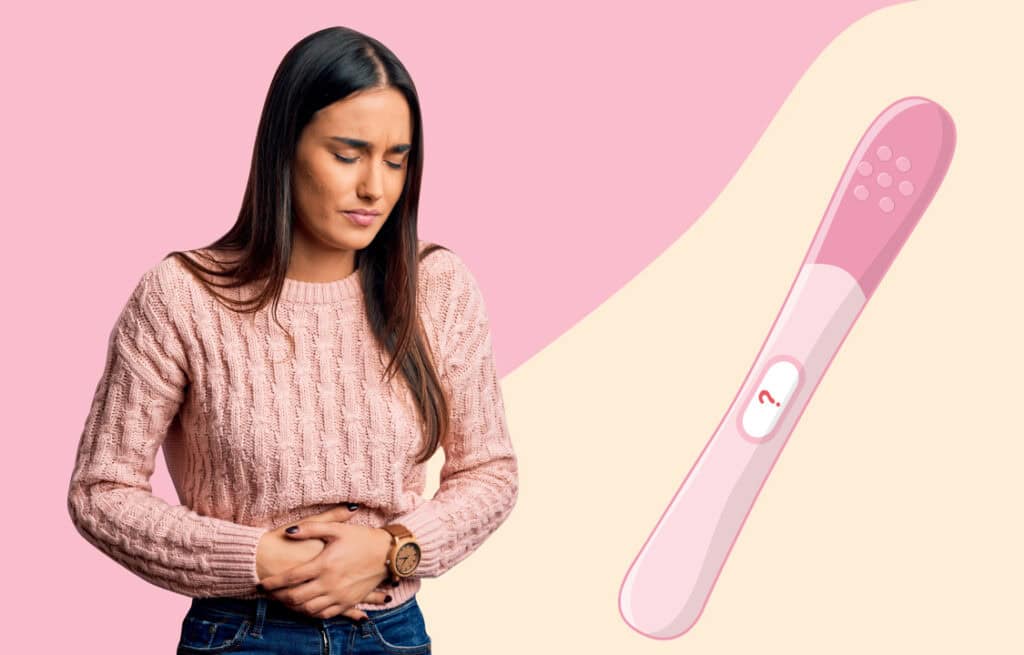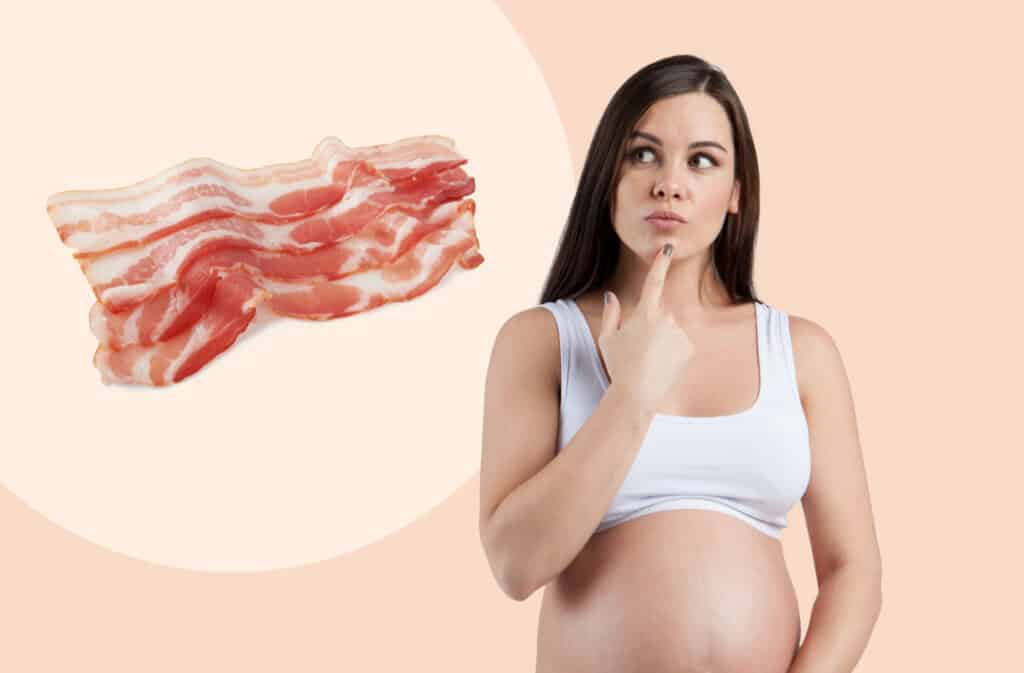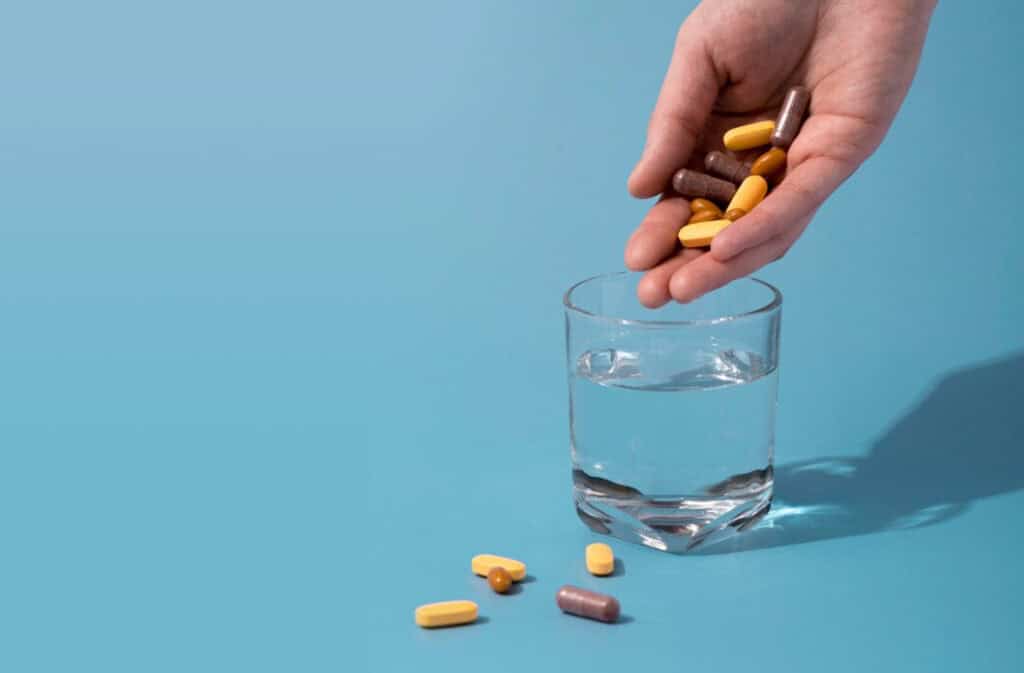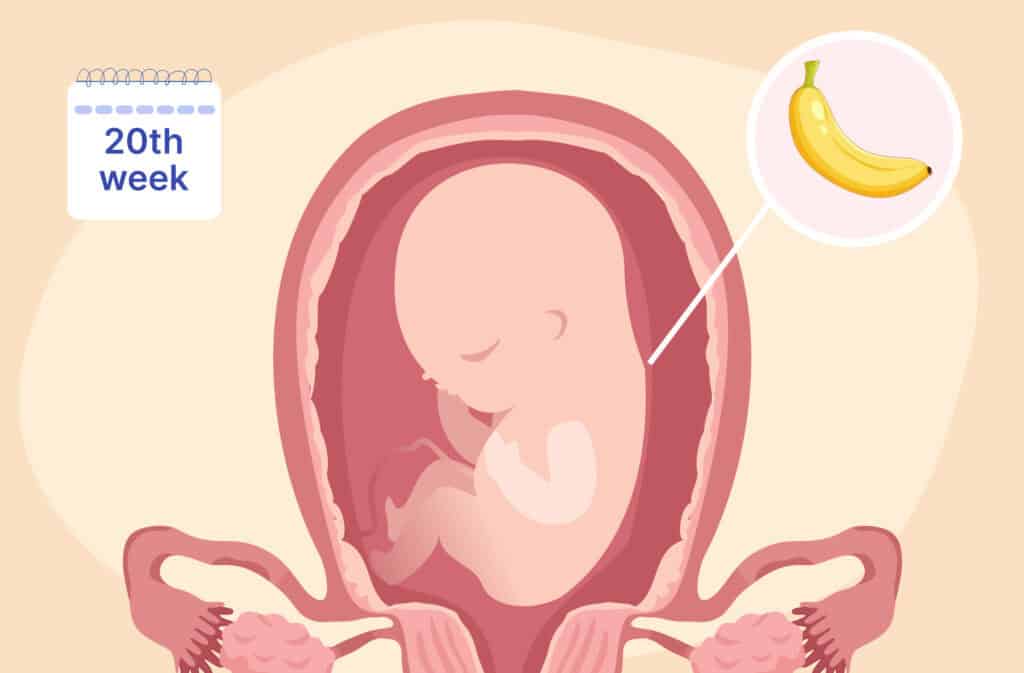Femia > Health Library > Getting Pregnant > Trying to conceive > Ovulation pain and pregnancy success: What it means for your fertility
Ovulation pain and pregnancy success: What it means for your fertility

- Updated Feb 11, 2025
- Published
CRAFTED BY HUMAN
Crafted by human At Femia, we provide accurate and up-to-date information at every stage of your journey, from trying to conceive, pregnancy and postnatal support. All content is created by a real person based on in-depth research and own professional experience. Femia ensures that you will receive expert advice, strict accuracy and a personalized approach from our authors/medical experts. Learn more about our editorial policy.
FACT CHECKED
Fact checked At Femia Health, we maintain the highest standards of editorial excellence in delivering content focused on helping you conceive, guiding you through pregnancy, and supporting you postpartum. Explore our content review principles to learn how we ensure the accuracy and quality of our health and lifestyle tips for every stage of your journey.
Slight cramping felt in your lower pelvis in the middle of your cycle is likely to be ovulation pain. This can be caused by the hormone surge that triggers egg release, as well as the physical reaction to the follicle rupture in the ovary.
Since ovulation pain is experienced during the release of your egg, having sex around this time increases your chances of pregnancy success. However, having sex while experiencing ovulation cramping doesn’t guarantee pregnancy; it only increases its likelihood.
Ovulation pain affects as many as 40% of women during their reproductive years. Also known as Mittelschmerz, a German term meaning “middle pain,” ovulation cramping is felt as a slight twinge in your lower pelvis, often to one side. Just like ovulation bleeding, ovulation pain is a natural signal that you are ovulating. Having sex on the days leading up to and during ovulation increases your chances of getting pregnant. In this article, we will look at ovulation pain and pregnancy success, contributing factors, and when you should consult with your doctor.
Use Femia’s easy-to-use ovulation tracker, symptom log, and daily insights
to understand your fertility better and increase your chances of conception
What is ovulation pain?
Ovulation is the phase in your menstrual cycle when an egg is released from your ovary. For a 28-day cycle, this is roughly on day 14. During ovulation, there is a surge of luteinizing hormone (LH) favoring the release of your egg. Your LH hormone surge triggers ovulation, while ovulation pain is caused by follicle rupture and the release of fluid or blood that may irritate surrounding tissues during ovulation.
Additional signs indicating you might be ovulating include:
- Rise in basal body temperature
- Changes in your cervical mucus
- Spotting
- Fatigue
- Breast tenderness
Ovulation pain is felt either at the time of ovulation or slightly before. It is a discomfort you will experience for a few hours to a day or two. Ovulation cramping is only felt on one side of your lower pelvis. The pain is like a mild twinge—not as severe as a period cramp, but similar. This is because the LH surge favors contraction on one side of ovarian follicles and tubes to aid the release and transport of the egg. This prostaglandin-guided process is a cause of your mild ovulation pain.
Other possible causes of ovulation pain can include rupture of your ovarian follicle and irritation from the blood and fluid released during ovulation.
How long after ovulation pain is the egg released?
Ovulation typically occurs within 24–36 hours of the LH surge; however, in some cases, it may take up to 56 hours, as shown in recent meta-analyses. These variations highlight the importance of tracking ovulation signs comprehensively for an accurate fertility plan. After ovulation, your egg will survive for 12–24 hours, after which it disintegrates and is absorbed back into the body.
Your fertile window lasts for five days before ovulation and includes the day of ovulation. While the egg is only viable for about 24 hours after release, having intercourse in the days leading up to ovulation can still increase your chances of conceiving. These extra five days account for how long sperm can survive after its release.
👉Find out more: Best sex positions to get pregnant: Tips for optimizing conception
Why do I have cramps after ovulation?
While the cramping can be linked to ovulation, especially if you experience it every cycle, there could be other possible reasons for your pain.
Post-ovulation hormone changes
Hormone fluctuations, especially the LH surge, are responsible for the cramping you feel during ovulation. After ovulation, the slow fall in progesterone, if your egg is not fertilized, can also result in cramping. Many women experience prostaglandin-mediated PMS cramping, similar to ovulation pain. Normal cramping is light and manageable. However, if cramping is severe and occurs along with signs such as bleeding, consider talking to your doctor.
Signs of early pregnancy
If you have a relatively short menstrual cycle, implantation cramping can be mistaken for ovulation cramping. Implantation cramps are more noticeable around 6–12 days after ovulation—this is the time it takes for a fertilized egg to reach the uterus. If you have missed your period and experienced late ovulation pain this cycle (implantation cramping), consider getting a pregnancy test.
Other underlying medical causes
Persistent ovulation pain in every cycle that increases in intensity and causes a significant hindrance to your day might require further medical check-ups. Having underlying medical conditions such as PCOS, endometriosis, or pelvic inflammation may result in persistent pain around ovulation. Cramping throughout your cycle can also be a sign that you may need medical assistance to rule out other possible causes of your pain.
Does ovulation pain increase pregnancy success?
Regularly experiencing ovulation pain is a natural indicator for you to schedule sex, especially if you are trying to get pregnant. Along with ovulation pain, changes in your basal body temperature, cervical mucus, and spotting can be other indicators you track for ovulation. However, it is important to keep in mind that sex while you are experiencing ovulation pain does not increase pregnancy success. While ovulation pain can help identify your fertile window, it does not guarantee pregnancy success. Moreover, not experiencing ovulation pain is completely normal and does not impact fertility.
Additionally, it is also completely normal to not experience any pain during ovulation. So, having ovulation pain doesn’t indicate increased chances of pregnancy success.
Only 30% of couples get pregnant within one month of trying. This increases to 90% in the first year. So, since there is some chance of pregnancy success while having sex during ovulation pain, it may take a few months before you successfully get pregnant.
Use Femia’s easy-to-use ovulation tracker, symptom log, and daily insights
to understand your fertility better and increase your chances of conception
Does cramping during ovulation mean pregnancy?
Cramping during ovulation is a distinct symptom, but it is only a reliable indicator that ovulation is occurring. You may even experience it before or a few days after ovulation.
Cramping six to ten days after you experience ovulation pain, implantation cramping, might be a better indicator of pregnancy. Implantation cramping is felt long after ovulation, so it can be easier to differentiate. Cramping can also be coupled with light spotting close to when your period is due, signaling possible pregnancy.
To confirm your pregnancy, take a pregnancy test on the first day of your missed period. Taking a pregnancy test too early, such as right after sex, while you are experiencing ovulation pain, will come back negative. Pregnancy tests are positive only after implantation, a process resulting in hCG hormone release.
Other early signs of pregnancy include:
- Light spotting of implantation bleeding
- Breast tenderness
- Fatigue
- Increased urinary frequency
- Nausea or vomiting
- Heightened sense of smell
Is lower back pain during ovulation a sign of pregnancy?
With ovulation pain, you may notice some back pain as well. The prostaglandins released during ovulation from follicle rupture work as inflammatory mediators, causing mild pain in other regions of your lower pelvis.
If this is the first time you have noticed lower back pain after ovulation cramping, it might be something to take note of. If the pain subsides on its own, then there is usually no cause for concern. However, if your pain increases in severity, consider consulting with your doctor.
Pregnancy lower back pain will be more pronounced in your second trimester. Your growing belly, the stretched ligaments, and rising pregnancy hormones are all responsible for these pregnancy discomforts.
👉Find out more: Discharge before period vs early pregnancy: How to tell the difference
Pain when egg meets sperm: Myth or reality?
The process of fertilization is a microscopic event. This means you will not experience any pain when your egg meets sperm in your fallopian tube. The pain you experience around possible fertilization is lingering ovulation cramps or new implantation cramps. Both ovulation and implantation cramping can be coupled by changes in vaginal discharge or light spotting.
If you feel you might have become pregnant during your last fertile window, confirm it with a pregnancy test once you have missed your period. If a pregnancy test comes back negative and you still haven’t had your period, consider checking in with your doctor.
How to use ovulation pain to improve pregnancy chances?
Some simple ways you can use your ovulation pain to improve your pregnancy chances are to regularly track ovulation cramps and other signs of ovulation, such as change in cervical mucus, rise in basal body temperature, and signs of hormone fluctuation, such as breast tenderness. When you regularly track these signs, you will be able to estimate your fertile window. Try to have sex every alternate day in your fertile window to increase your chances of pregnancy success.
Ovulation predictor kits (OKPs) are another option that is easily available at your local pharmacy. These help improve how accurately you predict your date of ovulation each cycle. You can also use ovulation and fertility tracking apps, such as Femia, which help to monitor your ovulation symptoms, increasing the predictability of your fertile window with each cycle.
Ovulation pain should ideally subside in a couple of days. If your pain is persistent, severe, and appears with other signs such as heavy bleeding, check in with your doctor.
When to consult a doctor
Ovulation pain is felt as a slight twinge in your lower pelvis. For many, it is not even noticeable. Cramping can be accompanied by other signs suggesting you are ovulating. Keeping track of symptoms can help you assess if they are out of the norm.
If you notice the following, consider seeking medical advice:
- Severe, consistent pain lasting more than a few days after ovulation
- Alarming symptoms, such as fever or heavy bleeding, with ovulation pain
- Cramping present throughout your cycle
- You are unable to get pregnant after trying for several months
Questions from the Femia community
Is it too late to conceive after ovulation pain starts?
Ovulation pain occurs right after your LH surge. Your egg will release shortly after this and survive for about 24 hours. Having sex soon after you experience this pain increases your chances of pregnancy success.
Will I experience ovulation pain every month?
Most women who experience ovulation pain experience it every month. However, it is completely possible and even normal to go a few cycles without noticing any pain. Ovulation still takes place even if you are not experiencing any pain.
Can ovulation pain be mistaken for any other condition?
Experiencing pain around ovulation can result from other conditions, such as having cysts, appendicitis, or an ectopic pregnancy. Often, having these conditions results in excess pain, which is consistent with other signs of underlying medical disease.
Does the side of ovulation pain matter?
You will experience ovulation pain on the side of the ovary that is releasing your egg during your menstrual cycle. Since either ovary, the right or left, can release the egg, the side you experience ovulation pain may alternate between cycles.
Can ovulation pain indicate a fertility issue?
Ovulation pain on its own is not a cause for concern. However, if you experience pain that is consistent and severe, along with other irregularities with your cycle, you should consider getting a check-up for underlying medical conditions, such as PCOS or endometriosis.
The bottom line
Ovulation pain feels like a small cramp on one side of your lower pelvis. The pain accompanies the LH surge, which triggers egg release, and contraction of the fallopian tube. Your fertile window lasts for 5–6 days every month, based on how long sperm survives along with the 24 hours your egg survives after release.
Ovulation pain is a useful indicator of your fertile window. Regularly tracking ovulation signs can help you to increase your chances of pregnancy by timing intercourse. However, it is not a guarantee for pregnancy success, since it is only an estimate for increased chances.
To increase your chances of pregnancy success with ovulation pain, track other ovulation signs. Consider using an OPK to improve accuracy. If ovulation pain is severe, persistent, and accompanied by other signs, such as bleeding or fever, talk to your healthcare consultant.
References
- Brott, Nathan R., and Jacqueline K. Le. “Mittelschmerz.” StatPearls – NCBI Bookshelf, 1 May 2023, www.ncbi.nlm.nih.gov/books/NBK549822.
- Duffy, Diane M., et al. “Ovulation: Parallels With Inflammatory Processes.” Endocrine Reviews, vol. 40, no. 2, 2019, pp. 369-416, https://doi.org/10.1210/er.2018-00075.
- Erden, Murat, et al. “The LH Surge and Ovulation Re-visited: A Systematic Review and Meta-analysis and Implications for True Natural Cycle Frozen Thawed Embryo Transfer.” Human Reproduction Update, vol. 28, no. 5, Feb. 2022, pp. 717–32. https://doi.org/10.1093/humupd/dmac012.
- Bull, Jonathan R., et al. “Real-world Menstrual Cycle Characteristics of More Than 600,000 Menstrual Cycles.” Npj Digital Medicine, vol. 2, no. 1, Aug. 2019, https://doi.org/10.1038/s41746-019-0152-7.
- Bann, Sewon, et al. “A One-year Observational Cohort Study of Menstrual Cramps and Ovulation in Healthy, Normally Ovulating Women.” Scientific Reports, vol. 12, no. 1, Mar. 2022, https://doi.org/10.1038/s41598-022-08658-3.
- Taylor, A. “Extent of the Problem.” BMJ, vol. 327, no. 7412, Aug. 2003, pp. 434–36. https://doi.org/10.1136/bmj.327.7412.434.
- Salari, Nader, et al. “The Global Prevalence of Low Back Pain in Pregnancy: A Comprehensive Systematic Review and Meta-analysis.” BMC Pregnancy and Childbirth, vol. 23, no. 1, Dec. 2023, https://doi.org/10.1186/s12884-023-06151-x.
- Tung, J. J., et al. “A Study of the Relationship Between Sleep Duration and Ovarian Reserve in Women Seeking Fertility Treatment.” PubMed, 28 Mar. 2022, pubmed.ncbi.nlm.nih.gov/35258085/.

Curious if pregnant women can eat bacon? Learn whether bacon and turkey bacon are safe during pregnancy, along with tips for cooking and portion sizes.

Learn how PCOS supplements such as inositol, omega-3, and folic acid can help manage your PCOS symptoms and improve fertility.

At 20 weeks pregnant, you’re halfway through your journey, with your baby growing quickly. Discover what to expect, symptoms, and self-care tips for week 20.

